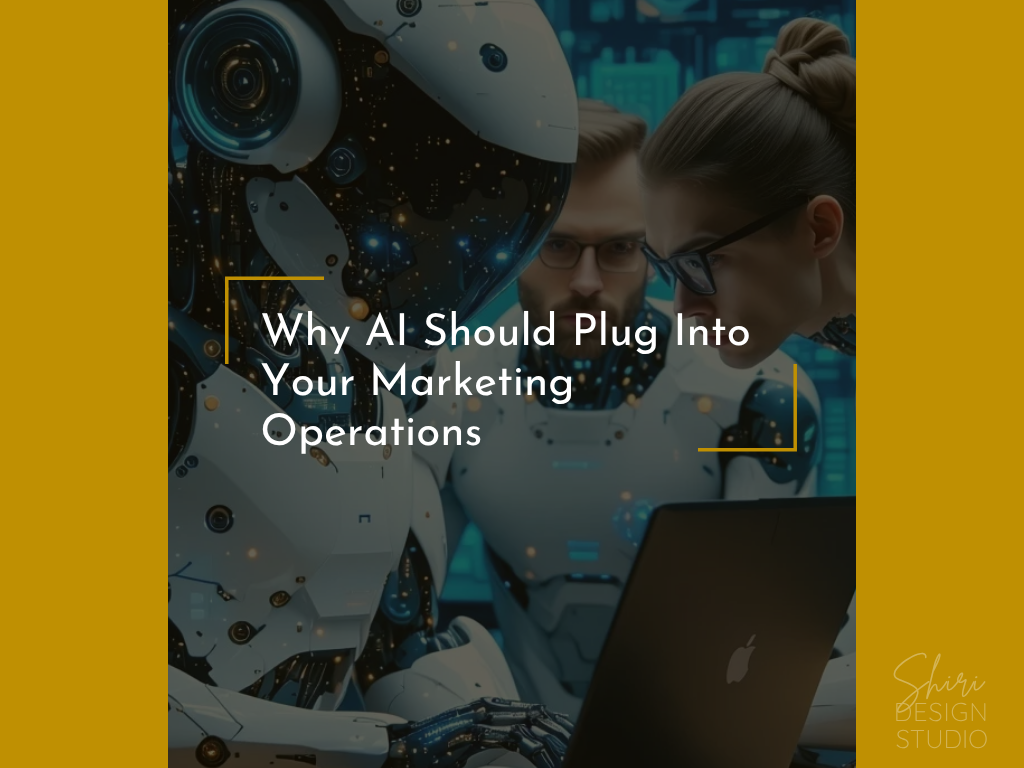Why AI Should Plug Into Your Marketing Operations—Not Replace Them

Artificial intelligence is no longer a futuristic idea—it's here, it's powerful, and it's already reshaping industries. For marketing teams, the buzz around AI can feel like both a blessing and a bit of a question mark. Should you automate everything? Replace entire workflows? Hand over your content creation to machines?
Here’s the good news: AI isn’t here to replace your marketing team—it’s here to supercharge it.
In this post, we’ll explore how marketing operations can plug AI into existing processes to improve efficiency, streamline workflows, and help marketers focus on what they do best: thinking creatively and strategically.
Why Marketing Teams Shouldn’t Fear AI
It’s easy to hear about AI writing copy, analyzing data, or generating campaign ideas and assume it’s coming for your job. But here’s the truth:
👉 AI is a tool, not a replacement.
Think of AI like a power drill in a toolbox. Sure, it makes building a lot easier—but you still need a skilled person behind it to know what to build, why it matters, and who it’s for.
In marketing operations, this mindset shift is key. You don’t need to overhaul your entire system to “go AI.” Instead, identify where AI can plug in to support your team’s workflows—not replace them.
Where AI Fits in Your Marketing Operations
Here are a few smart, practical ways marketing teams are integrating AI to boost efficiency without losing the human touch:
1. Data Analysis & Reporting
AI tools can quickly sift through massive datasets to highlight trends, performance insights, and opportunities. This means less time building dashboards—and more time making decisions.
🔧 Plug-in use case: Use AI to generate automated performance reports weekly so your team can act faster.
2. Content Creation Support
AI can generate content outlines, suggest headlines, or even draft social copy. But the real value is in co-creation—letting AI help get things started, while marketers refine and personalize.
🔧 Plug-in use case: Use AI to brainstorm blog post ideas or rework existing content for different platforms.
3. Customer Segmentation & Personalization
AI can analyze customer behavior and segment audiences based on actions, preferences, or funnel stage—far faster than manual processes.
🔧 Plug-in use case: Let AI suggest personalized email sequences based on user behavior.
4. Workflow Automation
From lead routing to approval chains, AI can automate repetitive steps in marketing operations—reducing bottlenecks and saving time.
🔧 Plug-in use case: Use AI to trigger next steps in your campaign workflow when a task is completed.
The Real Win: AI + Humans = Greater Efficiency
The magic happens when you combine AI’s speed and pattern recognition with your team’s creativity, empathy, and strategic thinking. That’s the sweet spot for true marketing efficiency.
By plugging AI into the right parts of your marketing operations, you:
- Speed up execution
- Make smarter decisions faster
- Free up your team for higher-value work
And most importantly—you keep the human touch that makes your brand stand out.
Getting Started: Don’t Overthink It
If you’re new to AI, start small:
- ✅ Pick one bottleneck in your current process.
- ✅ Identify if an AI tool could make it faster or easier.
- ✅ Test it out—and get feedback from your team.
Remember, this isn’t about flipping a switch overnight. It’s about augmenting what’s already working with smart tools that help your team do their best work.
Final Thoughts
AI is a game-changer—but only if you use it wisely. Marketing teams that treat AI as a plug-in to their operations—not a full replacement—will see the biggest gains in efficiency and performance.
So instead of asking, “What can AI take over?” Ask, “How can AI help us do this better?”
The future of marketing isn’t machine vs. human—it’s the two working together.
Get in touch with me to discuss how I can help your marketing team create more efficiency.
